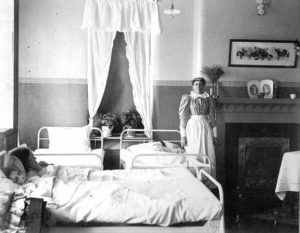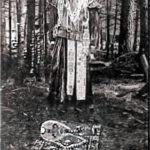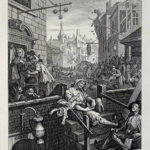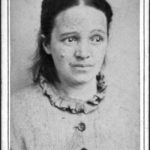With perhaps a very rare exception, all insane asylums were inspected on a reasonably regular basis, and inspectors visited the Canton Asylum for Insane Indians a number of times. Visits were usually routine, though the asylum received a number of special inspections brought on by complaints or allegations of misconduct that reached the Indian Office. In 1923, George Vaux Jr., chairman of the Board of Indian Commissioners, went to Canton on an apparently routine visit and gave his assessment of the institution.

Central State Hospital Cannery, mid-1900s, Where Patients Worked as Part of Their Occupational Therapy
Vaux mentioned that there were 30 different tribes represented there, with the Sioux, Chippewa, and Menominee tribes in greatest number (since they were closer to the facility). Then he said: “Dr. Hummer is a great believer in the out doors for his patients. . . . There are some sun galleries and sleeping porches for those not able otherwise to be out of doors. Their general health is good for such classes of patients, and there is cheerfulness everywhere. This is maintained notwithstanding the naturally depressing atmosphere that one expects to find in such a hospital as this one, where as a rule death issues all of the discharge orders.”
Modern readers might wonder where all this cheerfulness originated, since most patients were quite desperate to return home or couldn’t have been comfortable in a place where they couldn’t speak the language. Many institutions kept their most presentable patients close to the administration offices where visitors would be likely to see them, and perhaps Dr. Hummer ensured that Mr. Vaux saw only the patients he could depend on to present a positive picture. Vaux did say that a few patients were violent–but only occasionally. “. . . so that much freedom is allowed them [the patients]. Now and then some one has to be kept locked up in a protected room, but in the main they are not difficult to control.”







